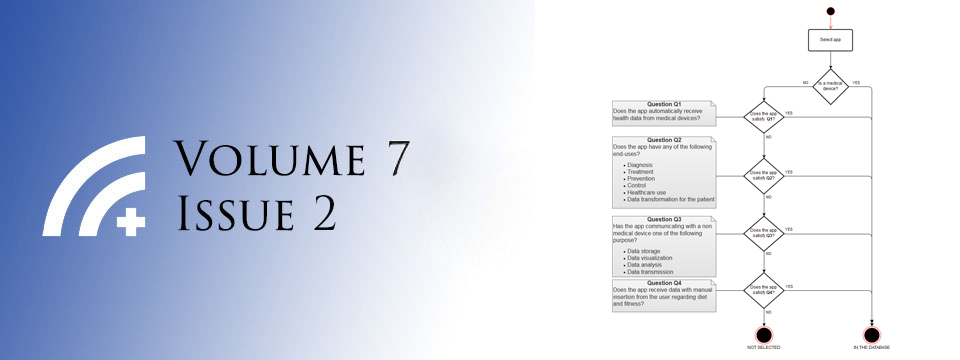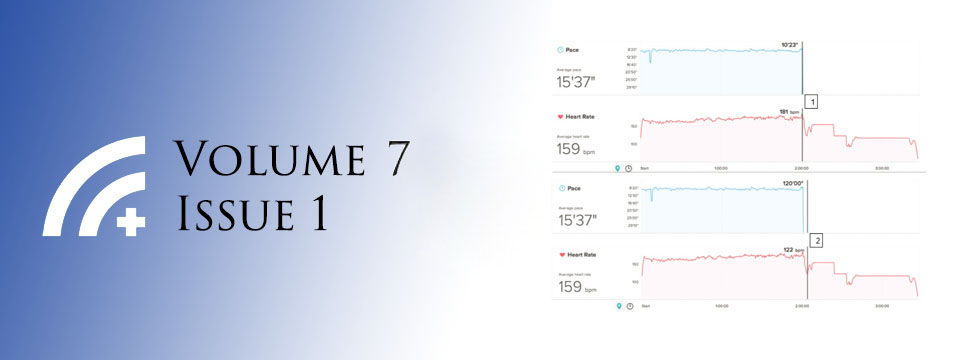Posted on Mar 27, 2016 in Original Article |
Robert Riss, MD1, Angellar Manguvo, PhD2, Jennifer Quaintance, PhD3, Mohamed Radhi, MD4, Maria Dycoco, MD5
1Children’s Mercy Hospital, Associate Director of Medical Student Education, Department of Pediatrics, University of Missouri at Kansas City, USA; 2Instructional Design Specialist & Assistant Professor, University of Missouri at Kansas City, Department of Medical Education, USA; 3Director of Medical Education Support Services, University of Missouri at Kansas City, Department of Medical Education, USA; 4Associate Professor, Children’s Mercy Hospital, Department of Pediatrics, University of Missouri at Kansas City, USA; 5Director of Medical Student Education, Children’s Mercy Hospital, Department of Pediatrics, University of Missouri at Kansas City, USA
Corresponding Author: rriss@cmh.edu
Journal MTM 5:1:19–26, 2016
doi:10.7309/jmtm.5.1.4
Background and Aims: The advent of mobile technologies has stimulated an academic shift in medical education from traditional methods to mobile teaching and learning. This study investigated medical students’ current and anticipated iPad usage as well as perceived impact of iPads on their learning and patient care. The ultimate purpose of the inquiry was to improve future implementation processes.
Methods: Twenty-three iPads were loaded with applications including Cerner Citrix Receiver, question banks, review texts, DynaMed, and the iTunes U application that contained clerkship curriculum. Fifty-eight students used the iPads during a Pediatrics rotation and filled out a survey upon completion. Descriptive statistics were generated from quantitative responses while thematic analysis was used to summarize ideas from qualitative responses. An exploratory mixed methods approach was used to integrate qualitative and quantitative findings. T-tests were used to determine differential usage as a function of prior iPad ownership and experience.
Results and Conclusions: Students variably used iPads to access question banks, didactics and review texts, conduct internet searches, and monitor patient information. IPads were most used compared to other electronic and print sources with cited advantages of portability, convenience, instant accessibility, enhancement of professional conduct, and time management. Respondents proposed other areas in which iPads could be used in the rotation. This highlighted the need to expand our iPad initiative to cover other aspects of learning. Given that prior iPad ownership and experience did not determine differences in usage, the observed variability in iPad usage suggests mere diversity of baseline needs.
Posted on Mar 26, 2016 in Original Article |
Ritesh S. Patel1, Julio Schwarz, MD1, Valerie Danesh, RN2, Arnold Einhorn, MD3, David Bello, MD1,3
1University of Florida College of Medicine, USA; 2Orlando Health Corporate Office of Research Operations, Clinical Research Coordinator in Critical Care, USA; 3Orlando Health Heart Institute, USA
Corresponding Author: rspatel1@ufl.edu
Journal MTM 5:1:45–51, 2016
doi:10.7309/jmtm.5.1.7
Background: Auscultation with stethoscopes is essential to the physical exam. However, the stethoscope has not appreciably changed since Leared and Cammann developed the first binaural stethoscopes in the mid 1800s. Technological advances make it possible to use smartphone technology to auscultate patients. The HeartBuds, a listening device that integrates with an iPhone app, achieves this purpose.
The purpose of this study was to compare HeartBuds’ acoustic superiority over the FDA approved class I blue disposable stethoscopes, which are commonly used in practice to reduce hospital infection rates, and demonstrate equivalence to the gold standard FDA class I analog stethoscope, the Littmann Cardiology III, and the FDA class II digital stethoscope, the Littmann Electronic 3200.
Methods: 50 adult patients were auscultated with each of the above-mentioned stethoscopes by two independent examiners. They rated their acoustic quality and completed surveys documenting body sounds heard.
Results: The disposable stethoscope was significantly worse at identifying cardiac murmurs (p < 0.002), and performed poorly when auscultating for carotid bruits (p < 0.058). The HeartBuds stethoscope was equivalent to its more commonly used counterparts, the Littmann Cardiology III and the Littmann Electronic 3200. Examiners also found it to be of comparable acoustic quality to these models.
Conclusion: HeartBuds is a smartphone compatible listening device that was superior in examining cardiovascular sounds to approved FDA Class I disposable stethoscopes, and equivalent to FDA approved class I and class II Littmann stethoscopes. Considering HeartBuds equivalence to more expensive stethoscopes while costing much less, the HeartBuds can potentially reduce infection rates without sacrificing quality.
Posted on Mar 26, 2016 in Original Article |
Kacie C.A. Blackman, PhD1,2, Jamie Zoellner, PhD, RD2,3, D. Scott McCrickard, PhD4, Judith Harlow, MS5, Woodrow W. Winchester III, PhD6, Jennie L. Hill, PhD2,3, Wen You, PhD7, Paul A. Estabrooks, PhD2,3,8
1Department of Preventive Medicine, University of Southern California Keck School of Medicine, Los Angeles, CA, USA; 2Department of Human Nutrition Foods, & Exercise, Virginia Tech, Blacksburg, VA, USA; 3Fralin Translational Obesity Research Center, Virginia Tech, Blacksburg, VA, USA; 4Department of Computer Science, Virginia Tech, Blacksburg, VA, USA; 5Department of Industrial & Systems Engineering, Virginia Tech, Blacksburg, VA, USA; 6Department of Systems & Industrial Engineering, Kennesaw State University, Kennesaw, GA, USA; 7Department of Agricultural & Applied Economics, Virginia Tech, Blacksburg, VA, USA; 8Department of Family Medicine, Virginia Tech Carilion Medical School, Roanoke, VA, USA
Corresponding Author: kblackma@usc.edu
Journal MTM 5:1:33–44, 2016
doi:10.7309/jmtm.5.1.6
Objective: The objective of the study was to implement a user-centred approach in the design and development of smartphone game-based applications (SGA) prototypes for PA promotion in adolescents, specifically from low SES families.
Aims: (1) Describe the development of smartphone game-based applications to promote physical activity in adolescents from primarily low socioeconomic status households. (2) Determine acceptability of initial prototypes.
Methods: This study implemented a user-centred approach including adolescent focus groups (n =3; 14 adolescents), parent interviews (n=7), and idea generation sessions (n=5; 80 participants) to develop and design smartphone applications as a persuasive technology for adolescents.
Results: Qualitative data demonstrated that adolescents identified smartphone features that would have the ability to have frequent opportunities for social networking and competition. The majority of parents had favourable perceptions of smartphone games for physical activity promotion. Furthermore, idea generating centred around sports and recreational games. A final set of games were developed into hand drawn and computer generated prototypes.
Conclusions: The study provides a framework for how to incorporate a user-centred approach in the design and prototype development of smartphone game-based applications, and indicates the feasibility of continued smartphone game-based applications development and effectiveness testing for promoting physical activity among low socioeconomic adolescents.
Posted on Mar 26, 2016 in Original Article |
Ian David Aronson, PhD1, Charles M. Cleland, PhD2, David C. Perlman, MD3, Sonali Rajan, EdD4, Wendy Sun, BA5, Christopher Ferraris, LMSW6, Jennifer Mayer6, David C. Ferris, MD6, Theodore C. Bania, MD, MS7
1National Development and Research Institutes, Inc., New York, NY, USA; 2Center for Drug Use and HIV Research (CDUHR), College of Nursing, New York University, New York, NY, USA; 3Icahn School of Medicine at Mount Sinai, Mount Sinai Beth Israel, New York, NY, USA; 4Department of Health and Behavior Studies, Teachers College, Columbia University, New York, NY, USA; 5Columbia University, New York, NY, USA; 6Institute for Advanced Medicine, Mt. Sinai Health System, New York, NY, USA; 7Ichan School of Medicine at Mount Sinai; Mount Sinai St. Luke’s; Mount Sinai West, New York, NY, USA
Corresponding Author: aronson.ian@gmail.com
Journal MTM 5:1:9–18, 2016
doi:10.7309/jmtm.5.1.3
Background: HIV prevalence remains disproportionately high among youth, especially among young men who have sex with men, young people with substance use disorders, and recently incarcerated youth. However, youth may not report behavioral risks because they fear stigma or legal consequences. While routine HIV screening programs have increased testing, current programs are not designed to identify, or provide prevention services to, high-risk patients who test HIV negative.
Aims: To examine the feasibility and preliminary efficacy of: a tablet-based screening designed to facilitate HIV risk reporting and testing among a sample of young urban emergency department (ED) patients; and a text message-based follow up protocol for patients who test HIV-negative and report increased behavioral risk.
Methods: 100 ED patients aged 18–24, who declined HIV tests offered at triage, completed a tablet-based intervention that included a risk screening, an educational video, and offered participants HIV tests. If patients accepted testing and reported increased risk, the tablets offered follow-up text messages.
Results: 30 participants accepted HIV tests following the intervention and 21 participants, identified by custom software as high-risk, agreed to receive text messages. Two thirds (66.7%) of text recipients responded to questions at week 6, more than half (57.1%) responded at week 8, one (4.76%) re-tested after week 12.
Conclusion: Results indicate our intervention provides a feasible way to facilitate risk reporting, increase HIV testing, and maintain ongoing contact with hard-to-reach youth via tablet computers and text messages.
Posted on Oct 20, 2015 in Featured |
The Editorial Board at the Journal of Mobile Technology in Medicine is proud to present Volume 4, Issue 3. Mobile technology in Medicine is a rapidly developing area, and we hope to continue accelerating research in the field. We look forward to your submissions for Issue 4.
Editorial
001 Virtual Environments in Modern Medicine
Chakrabarti, R., Perera, C.
Original Articles
002 Mobile Phone Use and Perspectives on Tailored Texting in Adults with Diabetes
Gatwood, J., Balkrishnan, R., Erickson, S.R., An, L.C., Piette, J.D., Farris, K.B.
013 Cell phone access among persons who inject drugs in Tijuana, BC, Mexico
Collins, K.M., Abramovitz, D., Meacham, M.C. Gonzalez-Zuniga, P.E., Patrick, K. Garfein, R.S.
020 Rest – An Innovative Rapid Eye Screening Test
Jan-Bond, C., Wee-Min, T. Hong-Kee, N., Zu-Quan, I., Khairy-Shamel, S.-T., Zunaina, E., Liza-Sharmini, A.-T.
Perspective Piece
026 The Potential Value of Virtual Environments (VEs) in Rehabilitation
Lehman, L.A.
032 Mobile Solutions For Physicians Shackled by Electronic Medical Records
Koll, J., Hansen G.
Case Reports
035 Mobile Virtual Reality for Ophthalmic Image Display and Diagnosis
Zheng, L.L., He, L., Yu, C.Q.
039 Android Smartphone as an Alternative to Operating Microscope Camera for Recording High Definition Surgical Videos: Setup and Results
S.K. Gupta, A. Kumar, A. Sharma, S. Agrawal, V. Katiyar
Posted on Oct 14, 2015 in Case report |
Luo Luo Zheng, BS1, Lingmin He, MD, MS2, Charles Qian Yu, MD3,4
1New York Medical College, Westchester, NY; 2Wilmer Eye Institute, Johns Hopkins University, Baltimore, MD; 3Department of Ophthalmology, Weill Cornell Medical College, New York, NY; 4Illinois Eye and Ear Infirmary, University of Illinois Chicago, Chicago, IL
Corresponding author: charlesy@uic.edu
http://youtu.be/1hUOLwVTrXw
Supplemental Video 1: Video capture of virtual display showing rhegmatogenous retinal detachment. The clinician feels that he or she is within the eye.
Journal MTM 4:3:35–38, 2015
doi:10.7309/jmtm.4.3.7
We here present the use of mobile technology (Samsung Gear VR) in the field of ophthalmology for the display of retinal imaging and demonstrate its use in diagnosis of ocular pathology. In this study a trained retina specialist used the Samsung Gear VR device to view ten wide field photos of retinal pathology, generating a diagnosis for each photograph. Another ophthalmologist then reviewed the ten photos in the traditional manner on a computer. Their diagnoses were compared to the known diagnoses. There was 100% concordance between the device and the traditional method as well as the known diagnosis. The increased display size and realistic presentation of the virtual reality display have the potential to improve diagnosis of ocular disease.










